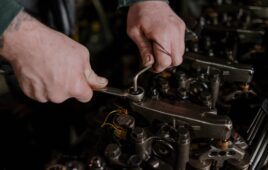
To learn more about this course or register, click here.
Fastener experts believe that upwards of 95% of all fastener failures are the result of either the wrong fastener for the job or improper installation. Whether this figure is accurate or not, threaded fasteners are poorly misunderstood by many in the fastener and user communities.
To support those working with fasteners, SAE International is offering an online course that will introduce participants to the key fastener engineering principles. SAE is a global provider in technical learning for the mobility industry.
The course, entitled “Fundamentals of threaded fastener (C1733)” takes place online on May 12 to 15, 2020, and will explain:
- Why tension is all-important in the bolted joint
- The relationship between torque and tension
- How screws can be used to form their own internal threads
- The newest technologies and practices being deployed by automotive manufacturers to achieve lighter weight products
Participants will explore the basics of threaded fasteners, what purpose specific product design features address, the importance of proper material choices, and the function of platings and coatings. This course will also include a segment on joining technologies that enable automotive designers and manufacturers to succeed in their light weighting activities.
What’s more: discounted pricing is in effect during the COVID-19 pandemic. Registration fees of $1200 apply to the special live, online offering.
Learning objectives
By attending this seminar, participants will be able to:
- Distinguish the different characteristics of threaded fasteners and in what situations/applications those characteristics should be deployed
- Explain the relationship between torque and tension in a bolted joint
- Differentiate various tightening strategies and assess the most appropriate for specific assembly operations
- Distinguish between different material choices and how associated unique material properties lend the designer to use one material over another
- Explain how high strength fasteners are achieved
- Evaluate the many plating and coating options available for fasteners and make choices that provide the user the greatest amount of value and utility.
- Explain the difference between a traditional bolted joint and a joint formed by a thread forming fastener. You will be able to distinguish fundamental differences between the fastener engineering that goes into thread forming in different materials
- Evaluate difficult joining scenarios posed by new assembly challenges and assess and apply new joining technologies that will successfully provide a solution





Tell Us What You Think!